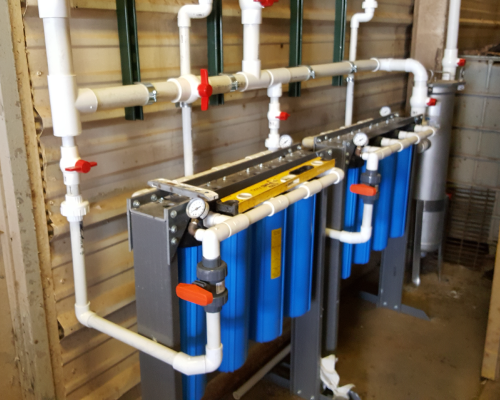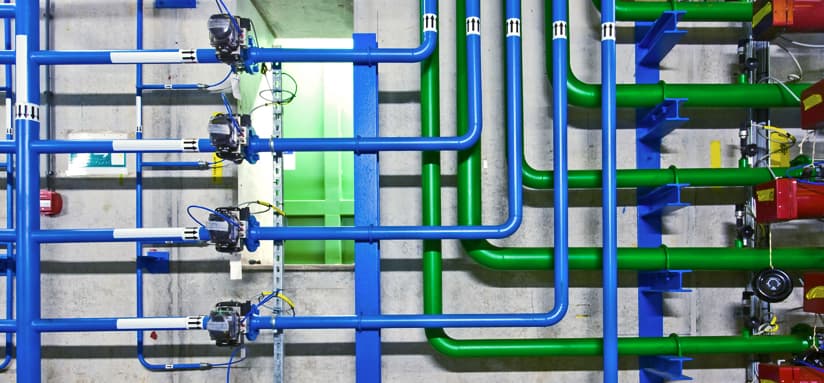The Basics of Your House's Plumbing System Anatomy
The Basics of Your House's Plumbing System Anatomy
Blog Article
What are your thoughts about Plumbing Installation 101: All You Need to Know?

Understanding just how your home's pipes system works is essential for each house owner. From supplying tidy water for drinking, cooking, and bathing to safely removing wastewater, a well-kept pipes system is vital for your family members's health and comfort. In this detailed overview, we'll explore the elaborate network that comprises your home's pipes and deal ideas on upkeep, upgrades, and taking care of common issues.
Introduction
Your home's pipes system is greater than just a network of pipes; it's a complex system that ensures you have access to clean water and effective wastewater elimination. Recognizing its parts and just how they collaborate can aid you prevent expensive repair services and make certain every little thing runs efficiently.
Fundamental Elements of a Plumbing System
Pipes and Tubing
At the heart of your plumbing system are the pipelines and tubes that carry water throughout your home. These can be made from different materials such as copper, PVC, or PEX, each with its advantages in regards to durability and cost-effectiveness.
Fixtures: Sinks, Toilets, Showers, etc.
Fixtures like sinks, toilets, showers, and tubs are where water is made use of in your house. Understanding how these components connect to the plumbing system assists in identifying troubles and planning upgrades.
Valves and Shut-off Points
Shutoffs regulate the circulation of water in your plumbing system. Shut-off shutoffs are critical during emergencies or when you need to make repair services, permitting you to separate parts of the system without interfering with water flow to the whole home.
Supply Of Water System
Main Water Line
The primary water line attaches your home to the metropolitan water or an exclusive well. It's where water enters your home and is dispersed to various fixtures.
Water Meter and Pressure Regulator
The water meter steps your water usage, while a pressure regulator ensures that water flows at a secure stress throughout your home's pipes system, stopping damages to pipes and fixtures.
Cold Water vs. Hot Water Lines
Recognizing the difference in between cold water lines, which provide water straight from the major, and warm water lines, which bring warmed water from the hot water heater, assists in troubleshooting and planning for upgrades.
Drainage System
Drain Pipes Piping and Traps
Drain pipelines lug wastewater far from sinks, showers, and commodes to the sewage system or septic system. Catches stop drain gases from entering your home and likewise trap debris that could create blockages.
Ventilation Pipes
Air flow pipelines enable air into the drainage system, stopping suction that could reduce water drainage and trigger traps to empty. Correct air flow is vital for preserving the honesty of your plumbing system.
Relevance of Appropriate Drainage
Making sure correct drainage protects against backups and water damages. On a regular basis cleaning drains pipes and maintaining catches can prevent costly fixings and extend the life of your plumbing system.
Water Heating System
Sorts Of Water Heaters
Water heaters can be tankless or traditional tank-style. Tankless heating systems warm water on demand, while containers store warmed water for instant use.
Just How Water Heaters Link to the Pipes System
Understanding just how water heaters attach to both the cold water supply and warm water distribution lines aids in detecting problems like insufficient warm water or leaks.
Upkeep Tips for Water Heaters
Frequently purging your hot water heater to eliminate sediment, examining the temperature setups, and examining for leakages can prolong its life-span and enhance energy performance.
Typical Pipes Problems
Leakages and Their Reasons
Leaks can take place because of maturing pipes, loosened installations, or high water pressure. Resolving leaks quickly stops water damages and mold development.
Clogs and Obstructions
Blockages in drains pipes and commodes are frequently triggered by flushing non-flushable products or an accumulation of oil and hair. Making use of drain screens and being mindful of what decreases your drains pipes can stop obstructions.
Signs of Plumbing Problems to Expect
Low tide pressure, sluggish drains pipes, foul odors, or unusually high water expenses are indicators of potential plumbing issues that need to be dealt with immediately.
Plumbing Upkeep Tips
Regular Evaluations and Checks
Arrange yearly pipes examinations to catch issues early. Try to find indicators of leaks, deterioration, or mineral accumulation in taps and showerheads.
Do It Yourself Maintenance Tasks
Easy jobs like cleansing tap aerators, checking for toilet leaks utilizing dye tablet computers, or shielding revealed pipelines in cold environments can protect against major plumbing issues.
When to Call an Expert Plumbing Technician
Know when a pipes concern requires professional knowledge. Attempting complicated repair work without appropriate understanding can cause even more damage and higher repair costs.
Upgrading Your Plumbing System
Reasons for Upgrading
Upgrading to water-efficient fixtures or replacing old pipes can improve water quality, minimize water costs, and raise the worth of your home.
Modern Pipes Technologies and Their Advantages
Explore technologies like clever leakage detectors, water-saving commodes, and energy-efficient hot water heater that can conserve cash and minimize ecological effect.
Expense Considerations and ROI
Determine the ahead of time prices versus lasting financial savings when thinking about pipes upgrades. Lots of upgrades spend for themselves with decreased utility bills and less fixings.
Ecological Effect and Conservation
Water-Saving Components and Devices
Setting up low-flow faucets, showerheads, and toilets can significantly lower water use without sacrificing efficiency.
Tips for Lowering Water Use
Easy habits like taking care of leakages quickly, taking shorter showers, and running complete tons of washing and meals can save water and lower your energy expenses.
Eco-Friendly Plumbing Options
Take into consideration sustainable pipes products like bamboo for flooring, which is durable and eco-friendly, or recycled glass for counter tops.
Emergency Readiness
Actions to Take During a Pipes Emergency situation
Know where your shut-off shutoffs are located and how to switch off the water in case of a burst pipe or significant leak.
Significance of Having Emergency Situation Get In Touches With Useful
Maintain get in touch with details for neighborhood plumbing technicians or emergency solutions readily available for fast action during a pipes crisis.
Do It Yourself Emergency Situation Fixes (When Suitable).
Temporary solutions like using air duct tape to patch a dripping pipe or putting a bucket under a leaking faucet can minimize damages until a specialist plumbing technician arrives.
Final thought.
Comprehending the anatomy of your home's pipes system encourages you to preserve it properly, saving money and time on repair work. By adhering to regular upkeep routines and remaining notified about modern pipes modern technologies, you can guarantee your plumbing system runs efficiently for several years to come.
Exploring Your Homes Plumbing Anatomy
Water Supply System
Main Water Line: This is where water enters your home from the municipal supply or a private well.
Water Meter: Typically located near where the main water line enters the property, it measures the amount of water used.
Shutoff Valve: It s crucial to know where this is in case of emergencies. It allows you to turn off the water supply to the entire house.
Pipes and Fittings: These distribute water throughout your home. Materials can include copper, PVC, or PEX.
Drain-Waste-Vent (DWV) System
Drains: Located in sinks, showers, and tubs, these carry wastewater away.
Traps: U-shaped pipes under sinks that hold standing water, blocking sewer gases from entering the home.
Vents: Pipes that lead from the DWV system to the outside, preventing vacuum formation and allowing gases to escape.
Sewer Line: Carries all wastewater from the home to the municipal sewer system or a septic tank.
Fixtures and Appliances
Sinks, Toilets, and Showers
Dishwashers and Washing Machines
Water Heaters
Maintenance Tips
Regularly check for leaks in exposed pipes and around fixtures.
Inspect the water heater annually for signs of wear.
Clean drains and traps to prevent clogs and odors.
Know how to shut off water to individual fixtures.
When to Call a Professional
Major leaks or burst pipes
Installation of new pipes or fixtures
Septic tank issues
Remodeling projects that involve plumbing changes
Conclusion
Understanding the anatomy of your home's plumbing is key to maintaining a functional and efficient system. Regular checks and knowing when to call in the experts can save you time, money, and stress.
https://www.mavyn.com/blog/exploring-your-homes-plumbing-anatomy

Exploring Your Homes Plumbing Anatomy
Water Supply System
Drain-Waste-Vent (DWV) System
Fixtures and Appliances
Maintenance Tips
When to Call a Professional
Conclusion
Understanding the anatomy of your home's plumbing is key to maintaining a functional and efficient system. Regular checks and knowing when to call in the experts can save you time, money, and stress.
https://www.mavyn.com/blog/exploring-your-homes-plumbing-anatomy
I recently found that article about Exploring Your Homes Plumbing Anatomy when doing research the web. Appreciated our write-up? Please quickly share it. Let someone else check it out. Thank you for being here. Revisit us soon.
Estimating Report this page